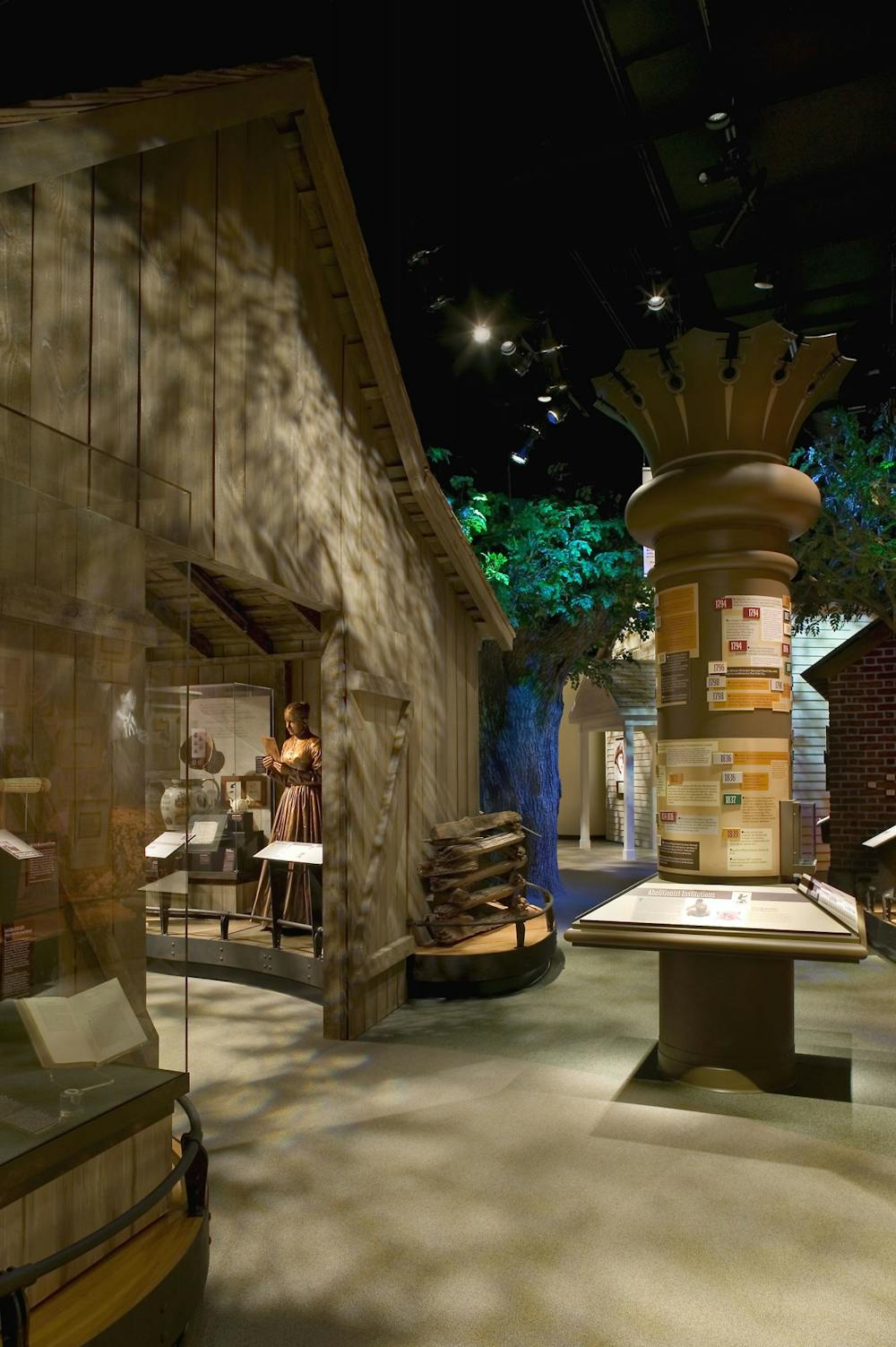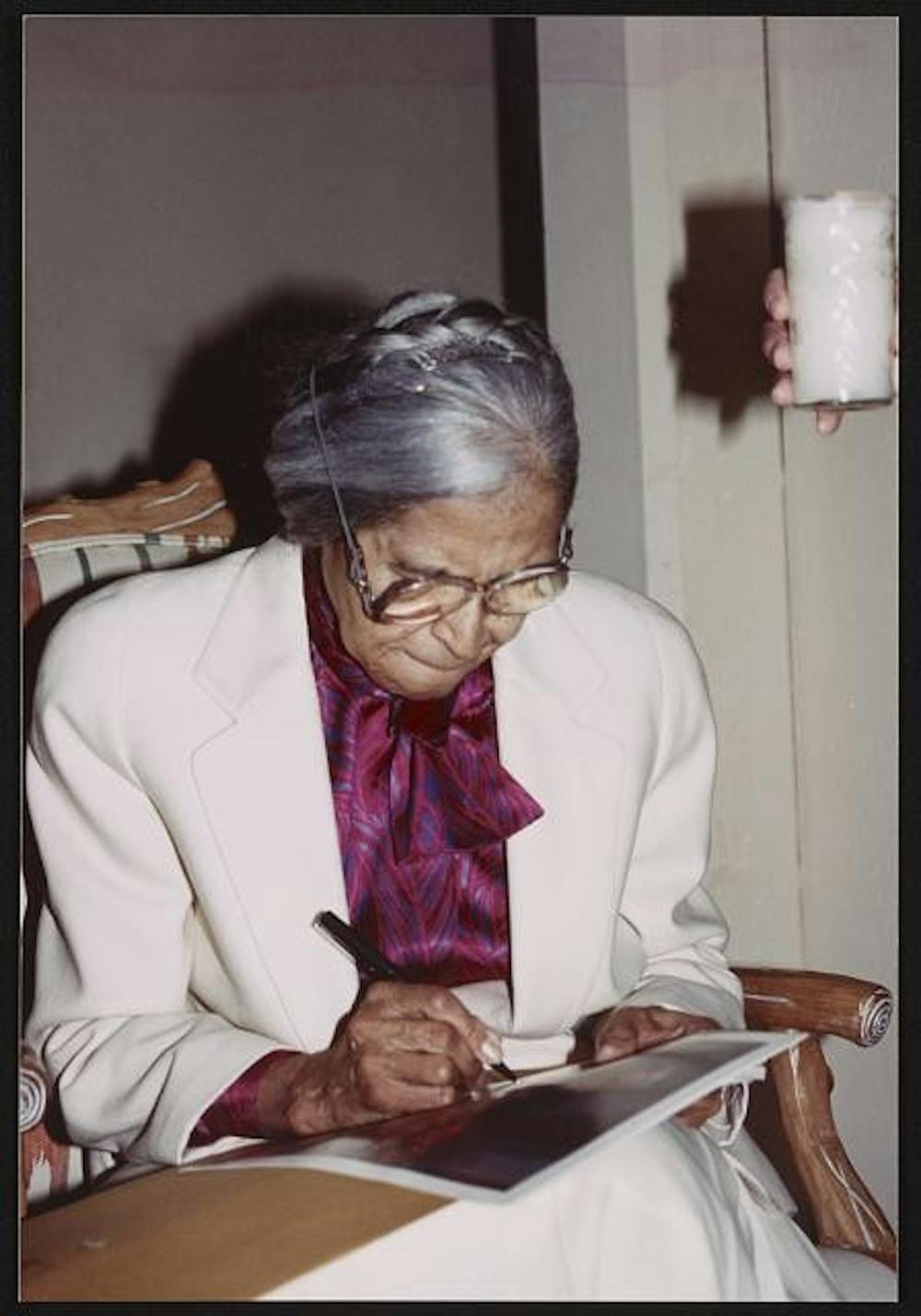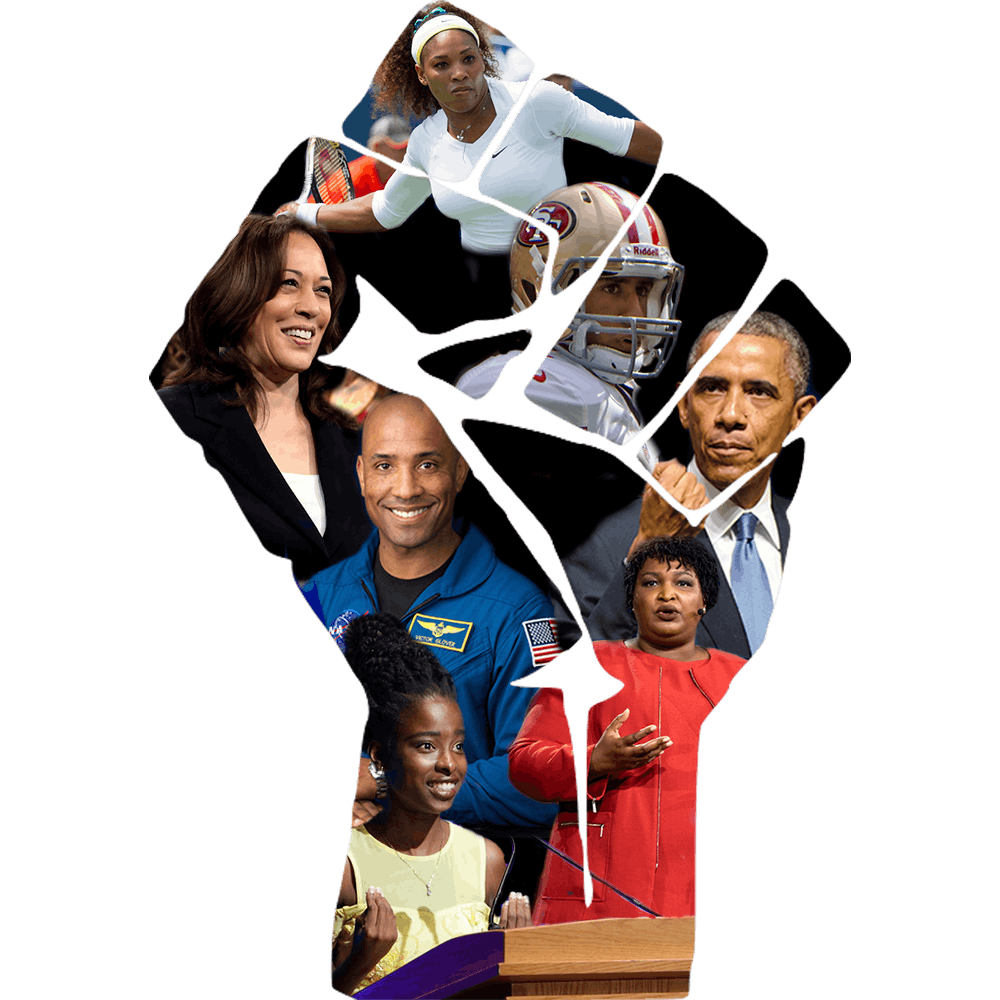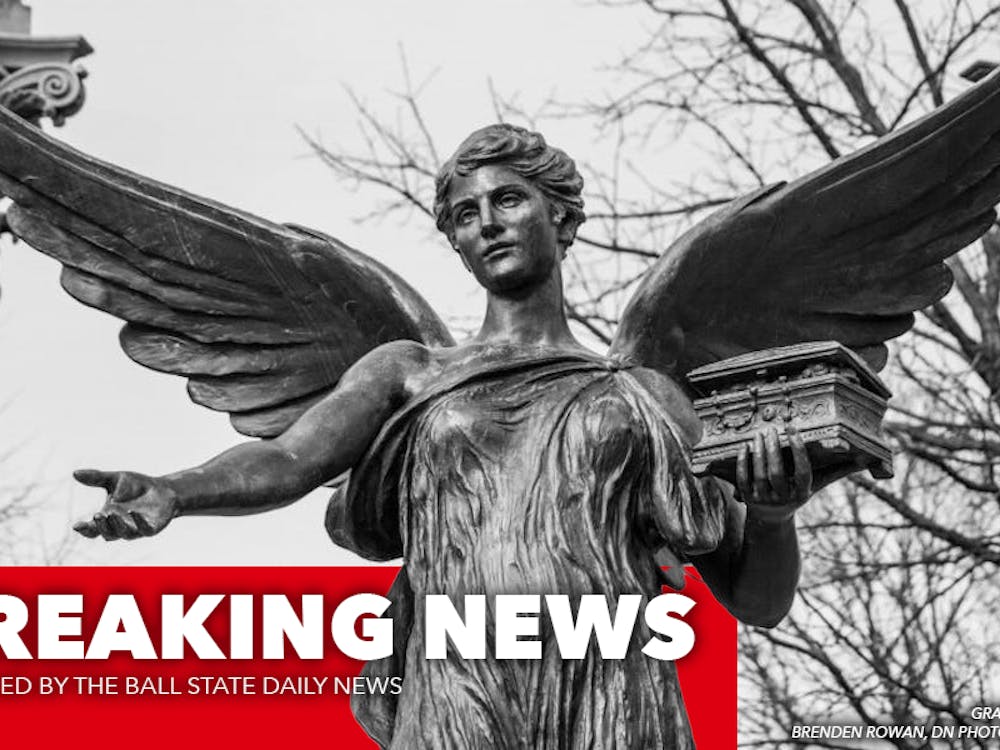Feb. 1 is the beginning of Black History Month — a time to celebrate the history, culture and achievements of Black people in America and all over the world. In honor of the beginning of Black History Month, here is a timeline of some of the biggest events in the history of Black civil rights.
1619: Slavery in North America
To satisfy labor needs in the North American colonies, white European settlers turned from the use of indentured servants to the use of enslaved Africans. Slavery began to spread after a Dutch ship brought 20 Africans ashore to Jamestown, Virginia. Some historians believe that 6-7 million enslaved people were brought to the New World during the 18th century alone.
1793: Rise of the Cotton Industry
Immediately following the Revolutionary War, the rural South faced an economic crisis and as cotton was exhausted. Eli Whitney created the cotton gin, a mechanized device that efficiently removed seeds from cotton. The cotton gin was widely copied, and the South would transition from a dependence on the cultivation of tobacco to cotton.
1831: Nat Turner’s Revolt
In August 1831, Nat Turner led the only effective slave rebellion in U.S. history. Turner and a small band of followers killed his owners, the Travis family, and set off toward the town of Jerusalem, where they planned to capture an armory and get more recruits. The group, which totaled around 75 Black people, killed around 60 white people in two days.
1831: The Underground Railroad
The early abolition movement was fueled by both enslaved people wanting to liberate themselves and groups of white settlers, such as the Quakers. In the early 19th century, a new brand of radical abolitionism rose in the North in response to Congress passing the Fugitive Slave Act of 1793, which allowed a slaveholder to recover an escaped slave. Abolitionists in the North had begun helping enslaved people escape from southern plantations to the North through a loose network of safe houses.

1857: Dred Scott Case
On March 6, 1857, the U.S. Supreme Court decided in Dred Scott v. Sanford that Congress had no constitutional power to deprive people of their property rights when dealing with enslaved people, thus making the Missouri Compromise unconstitutional. The owner of Dred Scott, a slave, had taken him from the slave state of Missouri to the Wisconsin territory and Illinois, where slavery was outlawed.
1859: John Brown’s Raid
John Brown, a Connecticut native, was a passionate opponent of slavery and assisted in the Underground Railroad out of Missouri. On Oct. 16, 1859, he led a small band of men in a raid against the federal arsenal at Harper’s Ferry, Virginia, where they would try to get enough ammunition to lead an operation against Virgnia’s slaveholders. Brown and the men with him, including several Black men, were able to hold the arsenal until troops were sent in and overpowered them. Brown was hanged Dec. 2, 1859.
1861: The Civil War and Emancipation
In 1861, 11 southern states seceded from the Union and formed the Confederate States of America. On Jan. 1, 1863, President Abraham Lincoln made it official that enslaved people within any state in rebellion, “shall be then, thenceforward, and forever free.” By freeing nearly 3 million enslaved people in the Confederacy, the Emancipation Proclamation deprived it of its labor forces, and 186,000 Black soldiers would join the Union Army.
1896: ‘Separate but Equal’
As Reconstruction drew to a close, Southern state legislatures began enacting the first “Jim Crow” laws, which were the first segregation laws. By 1885, most southern states had laws requiring separate schools for Black and white students. On May 18, 1896, the U.S. Supreme Court, in the Plessy v. Ferguson case, established the “separate but equal” doctrine that was used to establish the constitutionality of racial segregation laws.
1909: Founding of the NAACP
The National Association for the Advancement of Colored People was founded in 1909, after a new political protest movement demanded civil rights for Black people in the spirit of abolitionism. The NAACP’s goals were the abolition of all forced segregation, the enforcement of the 14th and 15th Amendments, equal education for Black and white students and complete enfranchisement of all Black men.
1920s: Harlem Renaissance
In the 1920s, the great migration of Black Americans from the rural South to the North sparked a Black cultural renaissance that became a widespread movement in cities throughout the North and West. The Harlem Renaissance marked the first time mainstream publishers and critics focused on Black literature, music, art and politics.
1947: Jackie Robinson
Jackie Robinson, a Black man from Georgia, joined the Kansas City Monarchs of the Negro American League in 1945, but caught the eye of Branch Rickey, general manger of the Brooklyn Dodgers. Robinson signed with the Dodgers farm team that same year, and two years later, moved up, making him the first Black player to play on a major league team.
1954: Brown v. Board of Education
On May 17, 1954, the U.S. Supreme Court unanimously ruled that racial segregation in public schools violated the 14th Amendment. The verdict reversed the “separate but equal” doctrine the Court established with Plessy vs. Ferguson in 1896.
1955: Emmett Till
In August 1955, Emmett Till, a 14-year-old Black boy from Chicago, was visiting family in Money, Mississippi, and had gone to the grocery store, where he allegedly whistled and made a flirtatious remark to the white woman behind the counter. Three days later, two white men dragged Till from his great uncle’s house in the middle of the night, beat him, shot him to death and threw his body in the Tallahatchie River. The two men confessed, but were acquitted by an all-white, all-male jury.

1955: Rosa Parks and the Montgomery Bus Boycott
On Dec. 1, 1955, Rosa Parks, a Black woman, was riding a city bus in Montgomery, Alabama, when the driver told her to give up her seat for a white man. Parks refused and was arrested for violating the city’s racial segregation ordinances. Four days later, the Montgomery Improvement Association, which had 90 participants, including Martin Luther King Jr., boycotted the city’s buses for more than a year.
1957: The Little Rock Nine
In September 1957, a federal court ordered the desegregation of Central High School in Little Rock, Arkansas. Governor Orval Faubus called the Arkansas National Guard to prevent nine Black students from entering the school, but he was later forced to call off the guard. Former President Dwight D. Eisenhower federalized the Arkansas National Guard and sent 1,000 members of the U.S. Army’s 101st Airborne Division to enforce the integration.
1960: Sit-In Movement
On February 1, 1960, four Black students sat down at a restaurant in Greensboro, North Carolina, and ordered coffee. They were refused service due to the restaurant’s “whites-only” policy, so they stayed there until the restaurant closed and returned the next day with more students. The Student Nonviolent Coordinating Committee was founded to capitalize on the sit-in movement’s momentum.
1961: The Freedom Rides
The Congress of Racial Equality sought to end discrimination and improve race relations through direct action. In May 1961, CORE sent seven Black Americans and six white Americans on a “freedom ride” from Washington, D.C., to New Orleans, when they were attacked by an angry group of segregationists outside Aniston, Alabama, with one bus being firebombed.
1963: Birmingham Church Bombing
In mid-September 1963, white supremacists bombed the 16th Street Baptist Church in Birmingham, Alabama, during Sunday services, and four young Black girls were killed. The church bombing was the third in 11 days and came after the federal government ordered the integration of Alabama’s school system.
1963: Martin Luther King Jr. and ‘I Have a Dream’
On Aug. 28, 1968, about 250,000 people participated in the March on Washington for Jobs and Freedom, the largest demonstration in the history of the U.S. capital. Various civil rights leaders appeared, including Martin Luther King Jr., whose “I Have a Dream” speech served as a defining moment for the civil rights movement.
1964: The Civil Rights Act of 1964
The civil rights movement had gained serious momentum in the 1960s, with former President John F. Kennedy making passage of new civil rights legislation part of his presidential campaign. Congress was debating Kennedy’s civil rights reform bill when he was shot and killed in Dallas, Texas, in November 1963. Former President Lyndon Johnson pushed the Civil Rights Act through Congress in June 1964.
1964: Freedom Summer
Civil rights organizations urged white students from the North to travel to Mississippi, where they helped register Black voters and build schools for Black children. Three volunteers — Michael Schwerner and Andrew Goodman, both white New Yorkers, and James Chaney, a Black Missippian — disappeared on their way back from investigating the burning of a Black church by the Ku Klux Klan. Their bodies were discovered Aug. 4 buried in a dam in Neshoba County, Mississippi.
1965: Selma to Montgomery March
In early 1965, Martin Luther King Jr.’s Southern Christian Leadership Conference made Selma, Alabama, the focus of its efforts to register Black voters in the South. On March 7, 600 marchers got as far as Edmund Pettus Bridge outside Selma before they were attacked by state troopers, and marchers turned around again March 9 when state troopers blocked the road again. On March 21, after a U.S. district court ordered Alabama to permit the march, 2,000 people marched to Montgomery with the protection of U.S. Army troops and the Alabama National Guard.
1965: Malcolm X Shot
Malcolm X was an influential leader of the Nation of Islam, also known as the Black Muslims, and combined Islam with Black nationalism. Malcolm X challenged the nonviolent pursuit of Martin Luther King Jr. and encouraged followers to defend themselves “by any means necessary.” On Feb. 21, 1965, three members of the NOI rushed the stage and shot Malcolm X nearly 15 times and killed him.
1965: Voting Rights Act of 1965
The Voting Rights Act of 1965 ensured protection of voting rights for Black Americans. The act sought to overcome the legal barriers that existed at the state and local level preventing Black citizens from exercising their right to vote. This was one of the most expansive pieces of civil rights legislation in American history.
1968: Martin Luther King Jr. Assassinated
On April 4, 1968, civil rights activist and Nobel Peace Prize winner Martin Luther King Jr. was shot and killed on the balcony of a motel in Memphis, Tennessee. King’s death opened a large rift between Black and white Americans, and the convicted murderer, James Earl Ray, was arrested two months later. In 1969, he was tried and sentenced to 99 years in prison.
1972: Shirley Chisholm Runs for President
In the 1970s, the civil rights movement combined with the second-wavefeminist movement to create a Black women’s movement. Margaret Sloan helped found the National Black Feminist Organization in 1973, and Rep. Shirley Chisholm of New York became the first major party Black candidate and the first female presidential candidate.
1978: Affirmative Action
“Affirmative action” refers to the policies aimed at compensating for past discimination based on race, color, sex or national origin. By the mid-1970s, many universities were seeking to increase the presence of minority and female students on campus. Allan Bakke, a white California man, sued U.C. Davis after failing to get into school, accusing them of “reverse discrimination.” In 1978, in Regents of the University of California v. Bakke, the Supreme Court ruled this was unconstitutional and Bakke should be admitted.
1992: The Los Angeles Riots
The L.A. riots were a response to the killing of Rodney King, who had been on probation for robbery and had been drinking when police officers attempted to pull him over for speeding on a freeway. The officers shot King after he allegedly resisted arrest, with the shooting being captured on video by George Holliday.
1995: The Million Man March
Hundreds of thousands of Black men gathered in Washington, D.C., “to meet in Washington for a day of atonement.” The march intended to bring spiritual renewal among Black men and instill them with a sense of solidarity and personal responsibility to improve their condition.
2001: Colin Powell Becomes Secretary of State
In 2001, former President George W. Bush appointed Colin Powell, Vietnam veteran and four-star U.S. Army general, as secretary of state, the first Black man to serve as America’s top diplomat. Powell tried to build international support for the U.S. invasion of Iraq in 2003, and resigned after Bush’s reelection in 2004. He made headlines when he broke from the Republican Party to endorse Barack Obama in 2008.
2008: Barack Obama Becomes First Black U.S. President
Barack Obama was elected as the first Black U.S. president in November 2008 and inaugurated on Jan. 20, 2009. Growing up in Hawaii, Obama’s mother and father were American and Kenyan, respectively. After graduating college, he moved to Chicago to work for several years as a community organizer on the city’s largely Black south side. He was reelected in 2012.
2013: Black Lives Matter Movement
The phrase “Black lives matter” was first used in a Facebook post by Alicia Garza after the acquittal of George Zimmerman, who killed Trayvon Martin in February 2012. Garza, along with Patrisse Cullors and Opal Tometi, formed the Black Lives Matter Network with the mission to “eradicate white supremacy and build local power to intervene in violence inflicted on Black communities,” and #BlackLivesMatter first appeared on Twitter in July 2013.
2020: The George Floyd Protests
George Floyd, 46-year-old Minneapolis native, died May 25, 2020, after police officer Derek Chauvin kneeled on his neck for more than eight minutes. Floyd’s killing came after two other high-profile cases in 2020 — Ahmaud Arbery and Breonna Taylor. The day after Floyd’s death, protesters took to the streets of Minneapolis, and other protests broke out in over 2,000 cities and towns throughout the country. Chauvin and three other officers were found guilty with different counts of murder in April 2021.

In this June 27, 2019, file photo, then-Democratic presidential candidate Sen. Kamala Harris, D-Calif., listens to questions after the Democratic primary debate hosted by NBC News at the Adrienne Arsht Center for the Performing Art in Miami. (AP Photo/Brynn Anderson, File)
2021: Kamala Harris Becomes Vice President
In January 2021, Kamala Harris became the first woman of color to be vice president of the United States. President Joe Biden nominated Harris at the Democratic Party’s remote national convention in August 2020, and in her victory speech, Harris said she was thinking of the “generations of women — Black women, Asian, white, Latina, Native American women — … who fought and sacrificed so much for equality and liberty and justice for all.”





